Experimental Evaluation of Coupled-Line Tunable Inductors with Switchable Mutual Coupling
Abstract
1. Introduction
2. Review of Existing Tunable Inductor Technologies
3. Review of Coupled-Line Tunable Inductor Structures
3.1. Operating Principle of the Coupled-Line Tunable Inductor
3.2. Examination of Coupled-Line Tunable Inductor Designs
4. Design Results of Coupled-Line Tunable Inductors
4.1. Measurement Results with Bonding Wire Switch Implementation
4.2. Measurement Results with Commercial Switch Implementation
5. Conclusions
Author Contributions
Funding
Data Availability Statement
Conflicts of Interest
References
- Lim, J.; Jeong, G.; Hong, S. A Self-Body-Biasing Network of Vector Sum Phase Shifter for Reduction of Output Capacitance Variation and Supply Current Variation. IEEE Access 2024, 12, 114460–114464. [Google Scholar] [CrossRef]
- Jiang, W.; Zhou, Q.; He, J.; Habibi, M.A.; Melnyk, S.; El-Absi, M.; Han, B.; Di Renzo, M.; Schotten, H.D.; Luo, F.-L.; et al. Terahertz Communications and Sensing for 6G and Beyond: A Comprehensive Review. IEEE Commun. Surv. Tutor. 2024, 26, 2326–2381. [Google Scholar] [CrossRef]
- Qiu, J.; Pang, J.; Liu, B.; Luo, X.; Wang, Y.; Zhang, Y.; Shirane, A.; Okada, K. A CMOS 24–30-GHz Low-Phase-Variation Variable Gain Amplifier Design for 5G New Radio. IEEE Solid-State Circuits Lett. 2022, 5, 146–149. [Google Scholar] [CrossRef]
- Pang, J.; Li, Z.; Kubozoe, R.; Luo, X.; Wu, R.; Wang, Y.; You, D.; Fadila, A.A.; Saengchan, R.; Nakamura, T.; et al. A 28-GHz CMOS Phased-Array Beamformer Utilizing Neutralized Bi-Directional Technique Supporting Dual-Polarized MIMO for 5G NR. IEEE J. Solid-State Circuits 2020, 55, 2371–2386. [Google Scholar] [CrossRef]
- Ding, K.; Leenaerts, D.M.W.; Gao, H. A 28/38 GHz Dual-Band Power Amplifier for 5G Communication. IEEE Trans. Microw. Theory Tech. 2022, 70, 4177–4186. [Google Scholar] [CrossRef]
- Lee, J.; Paek, J.-S.; Hong, S. Millimeter-Wave Frequency Reconfigurable Dual-Band CMOS Power Amplifier for 5G Communication Radios. IEEE Trans. Microw. Theory Tech. 2022, 70, 801–812. [Google Scholar] [CrossRef]
- Bae, B.; Kim, E.; Kim, S.; Han, J. Dual-Band CMOS Low-Noise Amplifier Employing Transformer-Based Band-Switchable Load for 5G NR FR2 Applications. IEEE Microw. Wirel. Technol. Lett. 2023, 33, 319–322. [Google Scholar] [CrossRef]
- Lee, J.; Jin, H.; Lee, G.; Sung, E.-T.; Hong, S. A 28/37-GHz Frequency-Reconfigurable Dual-Band 1-Channel Front-End IC for 5G Communication Radios. IEEE Trans. Microw. Theory Tech. 2025, 73, 1882–1895. [Google Scholar] [CrossRef]
- Zhang, J.; Chen, J.; Xu, T.; Qin, P.; Yi, X.; Wu, L.; Zhu, H.; Che, W.; Xue, Q. A Compact Dual-mode CMOS Power Amplifier Covering both Sub-6GHz and mm-Wave Bands for 5G NR. In Proceedings of the 2024 IEEE Radio Frequency Integrated Circuits Symposium (RFIC), Washington, DC, USA, 16–18 June 2024; pp. 139–142. [Google Scholar] [CrossRef]
- Wen, J.; Wang, R.; Wang, X.; Sun, W.; Sun, L. Multi-Band Millimeter-Wave Circuits for Spectrum Aggregation in B5G Era: A Tutorial. IEEE Trans. Circuits Syst. II Express Briefs 2024, 71, 1656–1662. [Google Scholar] [CrossRef]
- Park, P.; Kim, C.S.; Park, M.Y.; Kim, S.D.; Yu, H.K. Variable Inductance Multilayer Inductor with MOSFET Switch Control. IEEE Electron Device Lett. 2004, 25, 144–146. [Google Scholar] [CrossRef]
- Lee, S.; Park, J.; Hong, S. A Ka-Band Phase-Compensated Variable-Gain CMOS Low-Noise Amplifier. IEEE Microw. Wirel. Compon. Lett. 2019, 29, 131–133. [Google Scholar] [CrossRef]
- Min, D.; Park, C. Ka-Band CMOS Variable-Gain Amplifier Using Capacitive Compensation Technique to Suppress Phase Error. IEEE Trans. Circuits Syst. II Express Briefs 2025, 72, 118–122. [Google Scholar] [CrossRef]
- Liu, H.; Boon, C.C.; He, X.; Zhu, X.; Yi, X.; Kong, L.; Heimlich, M.C. A Wideband Analog-Controlled Variable-Gain Amplifier with dB-Linear Characteristic for High-Frequency Applications. IEEE Trans. Microw. Theory Tech. 2016, 64, 533–540. [Google Scholar] [CrossRef]
- Fang, M.; Yoshimasu, T. An Ultra-Low-Power Octave-Tuning VCO IC with a Single Analog Voltage-Controlled Novel Varactor. IEEE Trans. Circuits Syst. I Regul. Pap. 2022, 69, 4751–4760. [Google Scholar] [CrossRef]
- Lu, K.-C.; Wang, F.-K.; Horng, T.-S. Ultralow Phase Noise and Wideband CMOS VCO Using Symmetrical Body-Bias PMOS Varactors. IEEE Microw. Wirel. Compon. Lett. 2013, 23, 90–92. [Google Scholar] [CrossRef]
- Kitagawa, S.; Suzuki, S.; Asada, M. 650-GHz Resonant-Tunneling-Diode VCO with Wide Tuning Range Using Varactor Diode. IEEE Electron Device Lett. 2014, 35, 1215–1217. [Google Scholar] [CrossRef]
- Hikmat, O.F.; Mohamed Ali, M.S. RF MEMS Inductors and Their Applications—A Review. J. Microelectromech. Syst. 2017, 26, 17–44. [Google Scholar] [CrossRef]
- Park, C. Experimental Investigation of Differential Line Inductor for RF Circuits with Differential Structure. J. Inf. Commun. Converg. Eng. 2011, 9, 11–15. [Google Scholar] [CrossRef]
- Guo, L.; Yu, M.; Chen, Z.; He, H.; Zhang, Y. High Q Multilayer Spiral Inductor on Silicon Chip for 5–6 GHz. IEEE Electron Device Lett. 2002, 23, 470–472. [Google Scholar] [CrossRef]
- Rais-Zadeh, M.; Kohl, P.A.; Ayazi, F. MEMS Switched Tunable Inductors. J. Microelectromech. Syst. 2008, 17, 78–84. [Google Scholar] [CrossRef]
- Feng, J.; Lu, L.; Chen, X.; Sun, Y.; Wu, X.; Fan, X.; Li, L. A 60-GHz Variable-Gain Power Amplifier with a Switchable Inductor for TDD Systems. IEEE Microw. Wirel. Technol. Lett. 2024, 34, 512–515. [Google Scholar] [CrossRef]

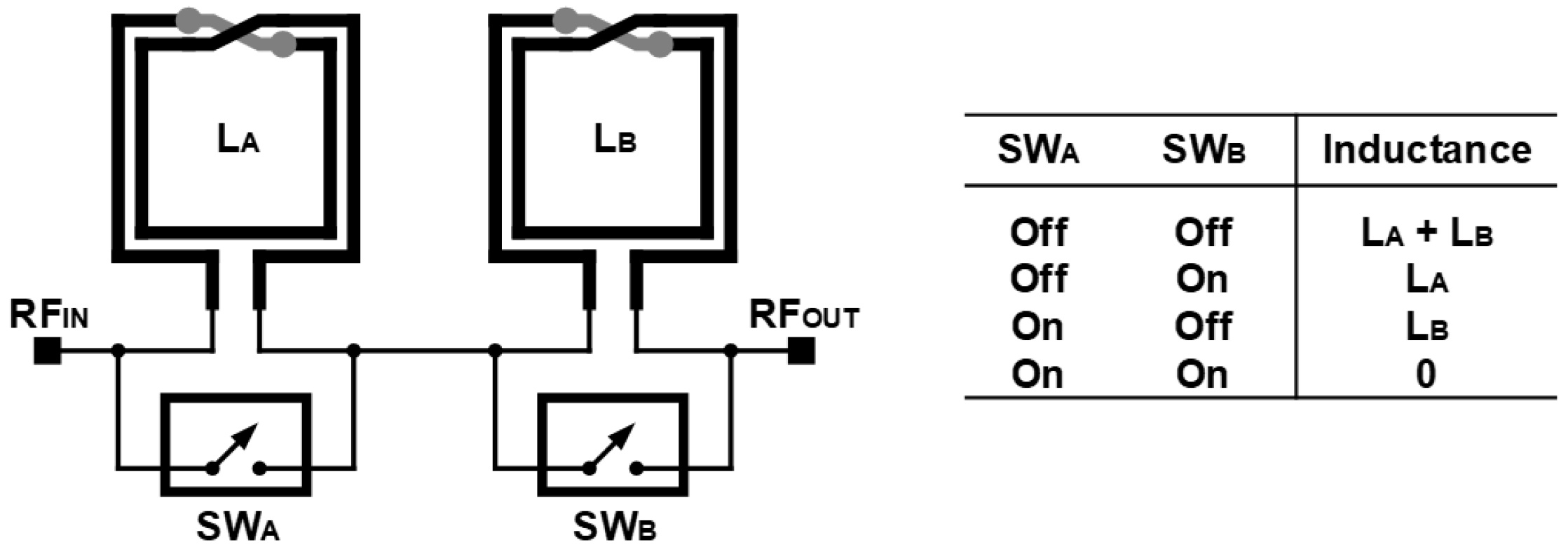





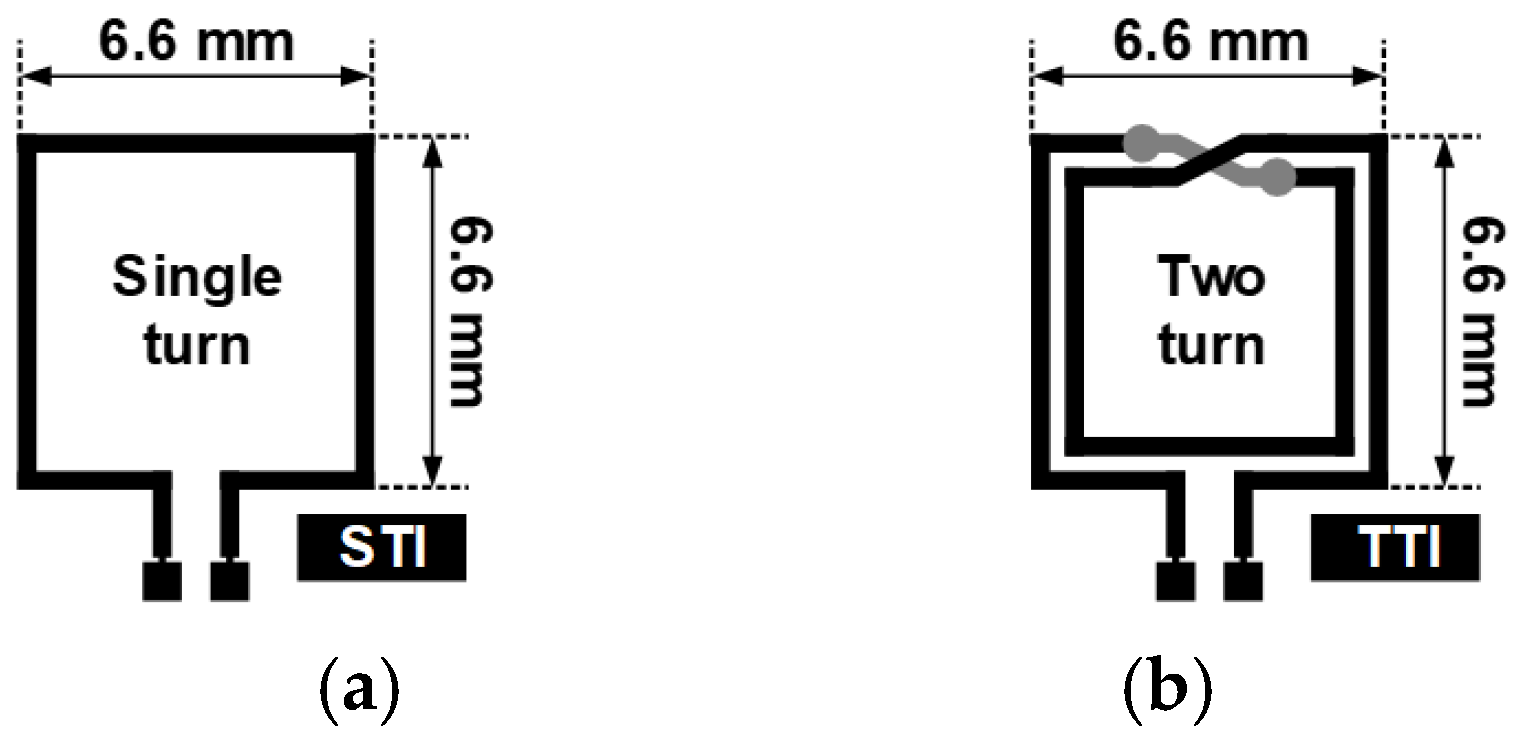


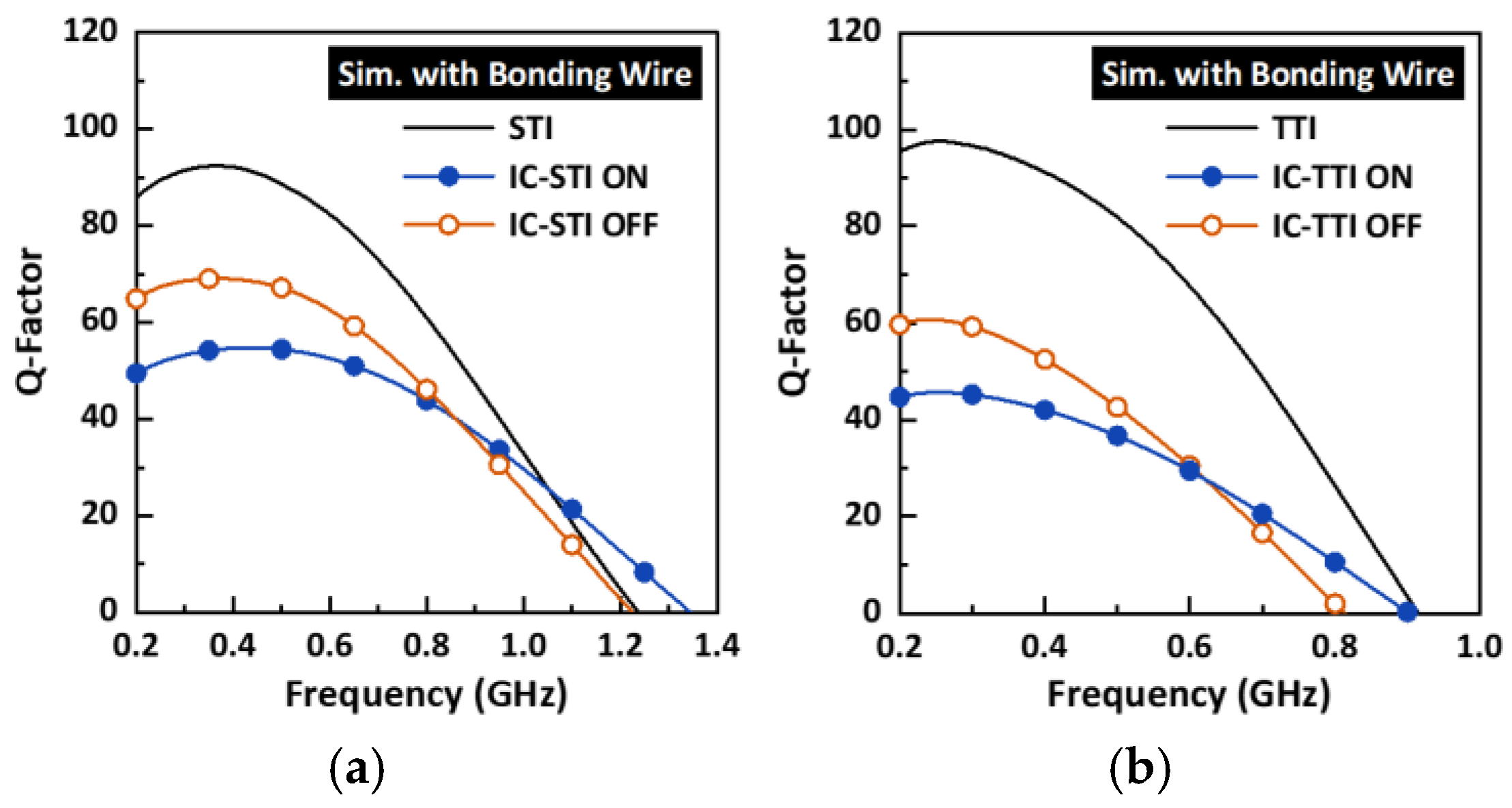
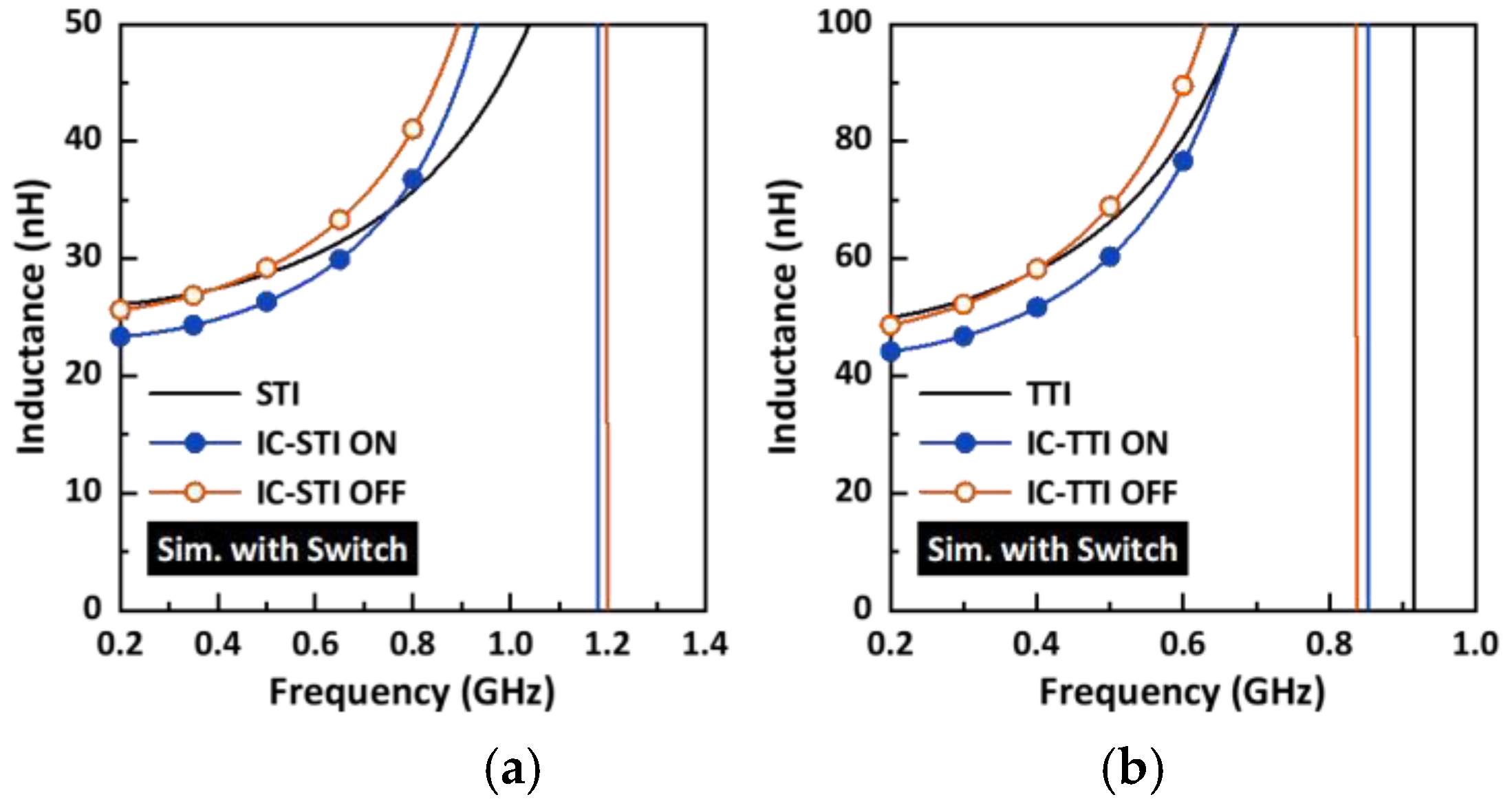



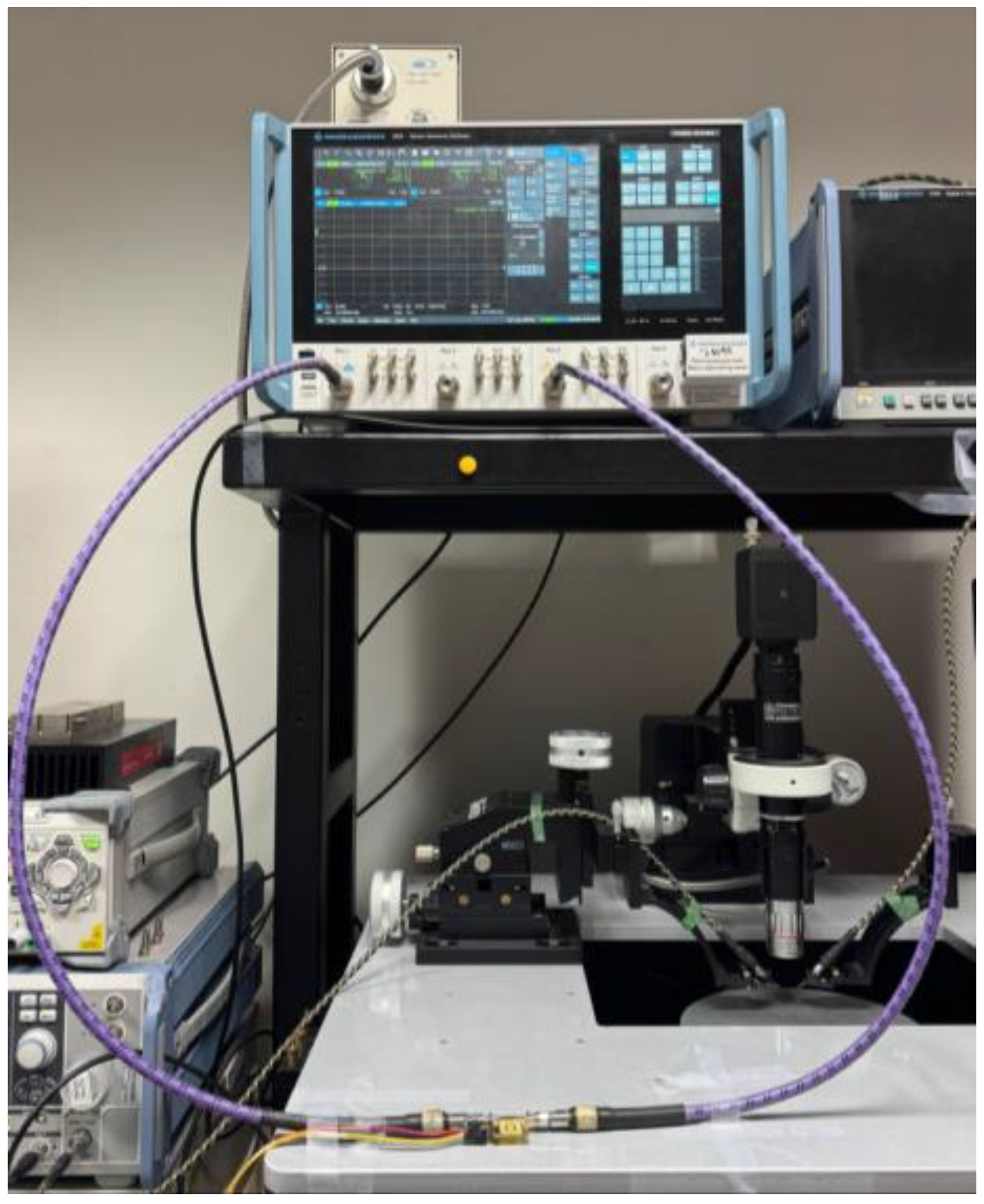
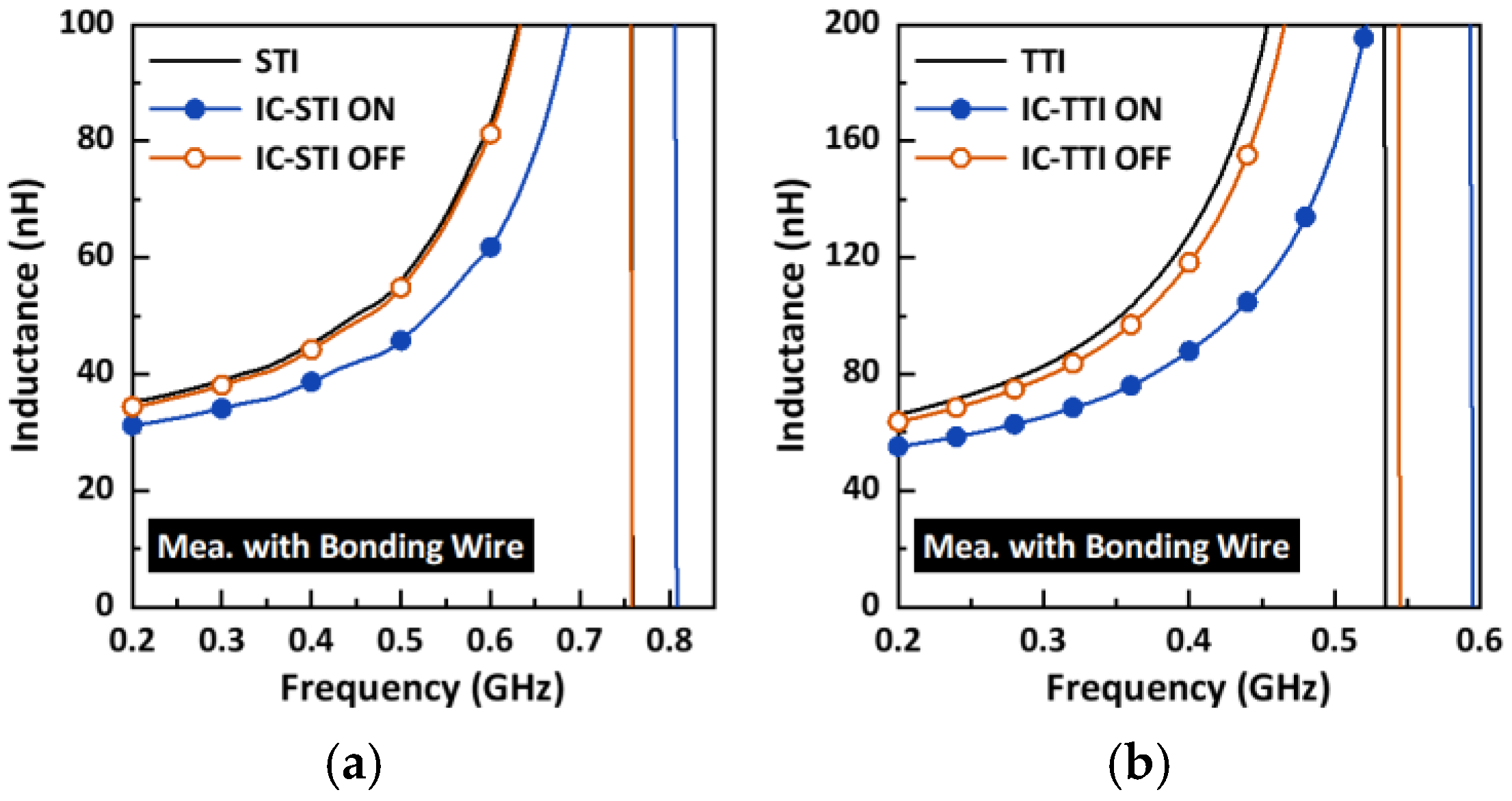
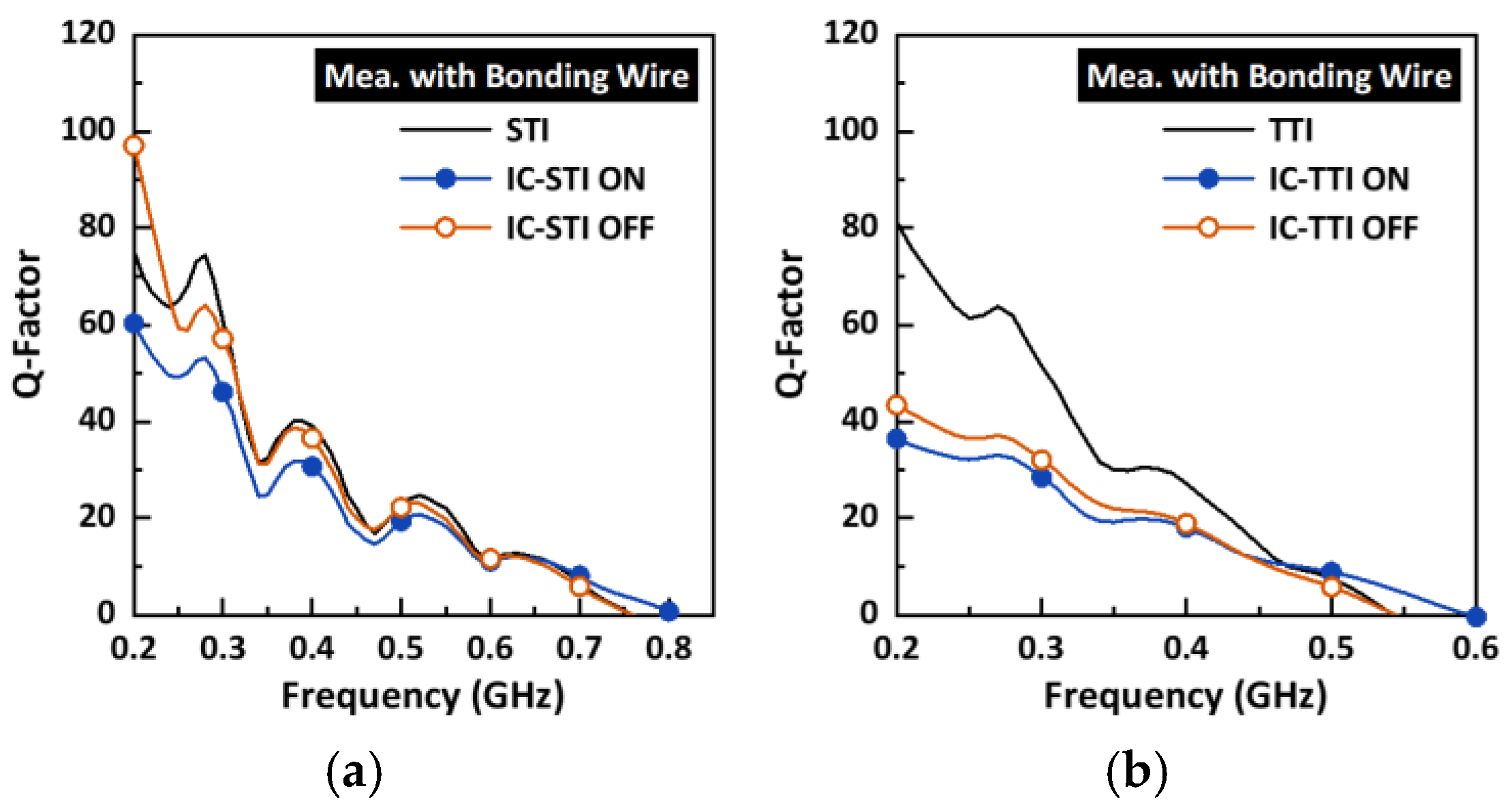
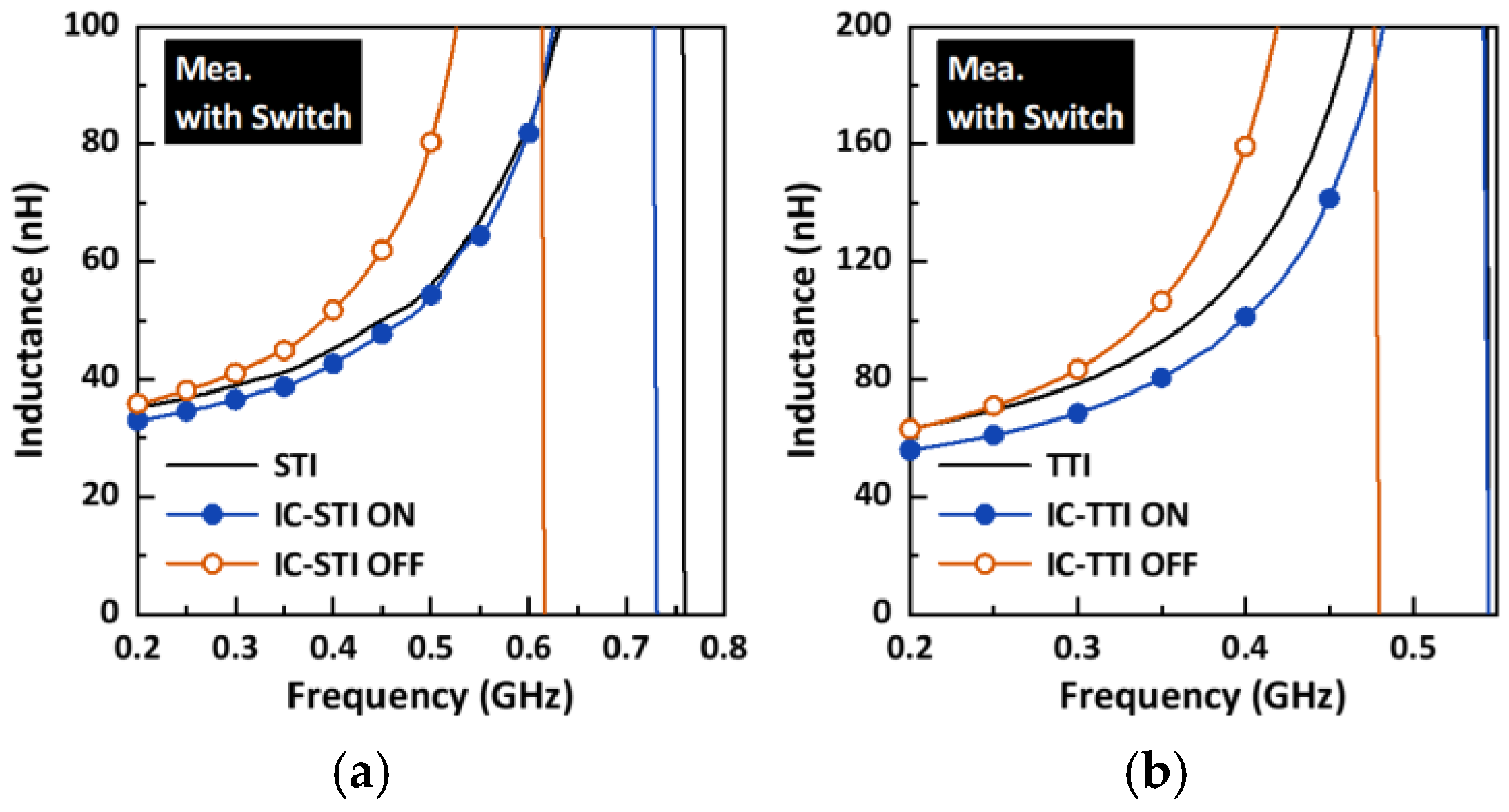

Disclaimer/Publisher’s Note: The statements, opinions and data contained in all publications are solely those of the individual author(s) and contributor(s) and not of MDPI and/or the editor(s). MDPI and/or the editor(s) disclaim responsibility for any injury to people or property resulting from any ideas, methods, instructions or products referred to in the content. |
© 2025 by the authors. Licensee MDPI, Basel, Switzerland. This article is an open access article distributed under the terms and conditions of the Creative Commons Attribution (CC BY) license (https://creativecommons.org/licenses/by/4.0/).
Share and Cite
Kim, Y.; Lee, J.; Kim, S.; Park, C. Experimental Evaluation of Coupled-Line Tunable Inductors with Switchable Mutual Coupling. Electronics 2025, 14, 3228. https://doi.org/10.3390/electronics14163228
Kim Y, Lee J, Kim S, Park C. Experimental Evaluation of Coupled-Line Tunable Inductors with Switchable Mutual Coupling. Electronics. 2025; 14(16):3228. https://doi.org/10.3390/electronics14163228
Chicago/Turabian StyleKim, Yejin, Jaeyong Lee, Soosung Kim, and Changkun Park. 2025. "Experimental Evaluation of Coupled-Line Tunable Inductors with Switchable Mutual Coupling" Electronics 14, no. 16: 3228. https://doi.org/10.3390/electronics14163228
APA StyleKim, Y., Lee, J., Kim, S., & Park, C. (2025). Experimental Evaluation of Coupled-Line Tunable Inductors with Switchable Mutual Coupling. Electronics, 14(16), 3228. https://doi.org/10.3390/electronics14163228





